Funny-- when I searched for the title of their photos in my FLICKR collection I turned up only a handful of shots. I thought FLICKR had lost them until I realized that my spelling was faulty most of the time, as they were indexed as "Dicksissel!" When I Googled the misspelled name I found I was not alone in my error. I checked out Wikipedia and Avian Web and learned that this is indeed the correct spelling-- in Sweden!
Among all those misspelled images was my favorite, ready for the wall:
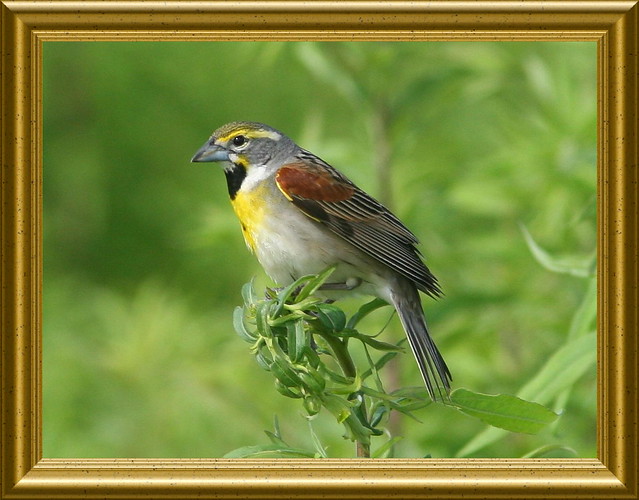
The size and shape of the black bib and amount and clarity of yellow on the male Dickcissel's undersides varies somewhat. This specimen had a beautifully clear yellow breast:
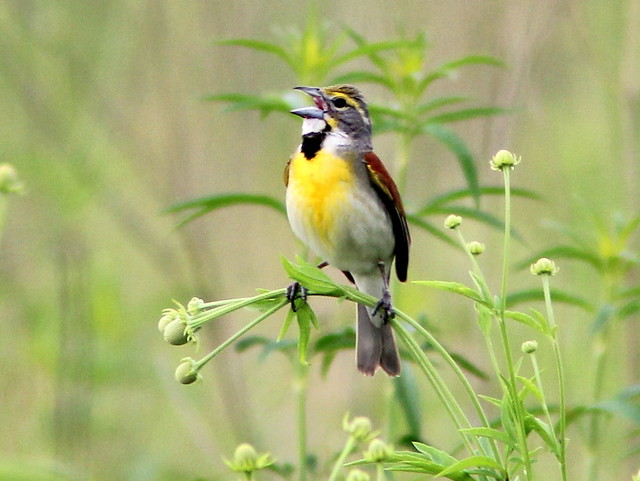
I always try to catch it singing. this fellow almost looks as if he is wearing a bow tie.

There may be vague streaks on the male's flanks.
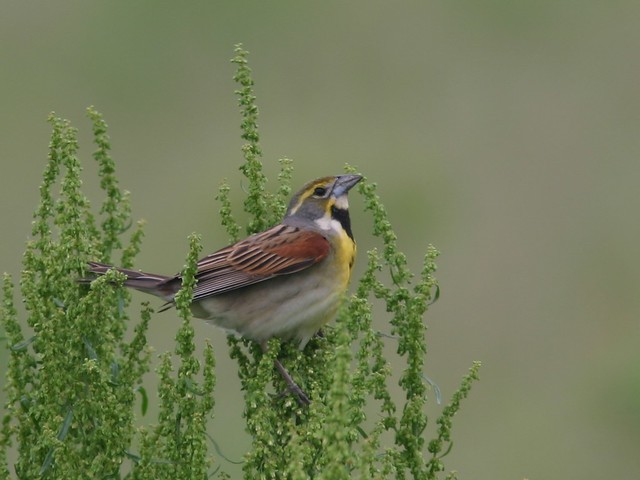
Some have particularly bright reddish color on their scapulars and wing coverts.
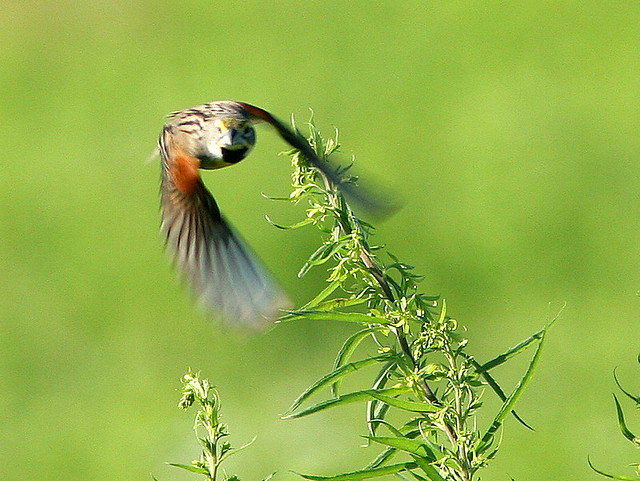
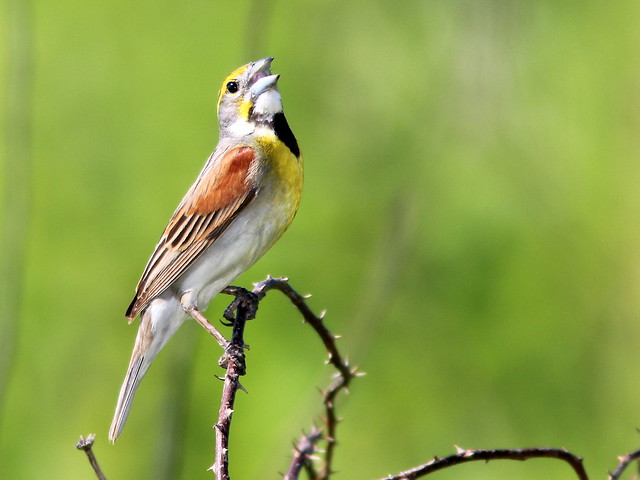
They are so much a part of life on the Midwestern grasslands that sometimes I want to include more prairie than bird in my compositions.
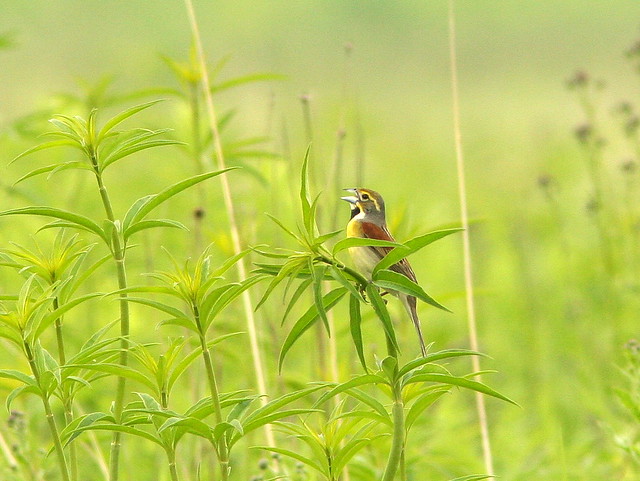
As if to show off his black breast spots, this male adopted an unusual pose.
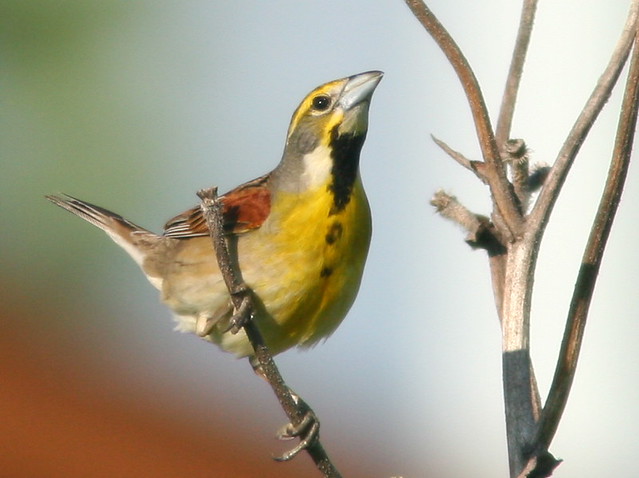
Believe it or not, all of the above photos were from the misspelled set! Not to overlook the females, their colors are more subdued but nonetheless beautiful-- and I spelled this one's name properly.
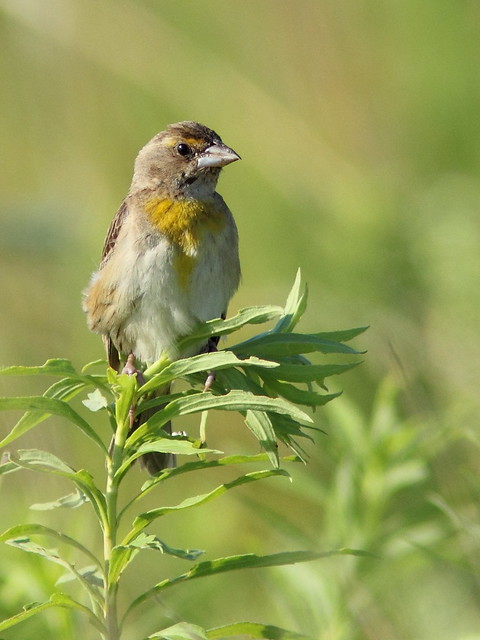
I found this female alone and some distance from the prairies, in a small dark and lush woodland. Out of its habitat, I initially thought it might be a tanager or some kind of sparrow before I did a double-take and realized its identity.

This summer I did not get out too often, and neither saw nor heard any Dickcissels in nearby Nelson Lake/Dick Young Forest Preserve, one of my favorite places to find it. In late August I got a fleeting glimpse of what looked to me to be a sparrow. Only when I was about to discard the image did I realize it looked like a female Dickcissel, the only one I photographed all this year! (Back home at the computer, I took a closer look at that bill-- narrow and more pointed, and that yellow throat and white eye ring. Dickcissel NOT. It is a warbler, a female Common Yellowthroat, and this year I have been unsuccessful in my quest.)

WOW!! In awe of your beautiful shots. This little one posed perfectly for you:) Thanks for sharing.
ReplyDeleteoh, your dickcissel shots are superb! my attempts to catch them this spring were poor, at best!
ReplyDeleteHI Ken I have never seen this little bird before and it is so pretty. Fantastic shots.
ReplyDeleteWhat a really nice series, Ken! Definitely "wall worthy"!
ReplyDeleteIt is a darling bird, no matter how you spell it...and I'm not even going to try.
ReplyDelete